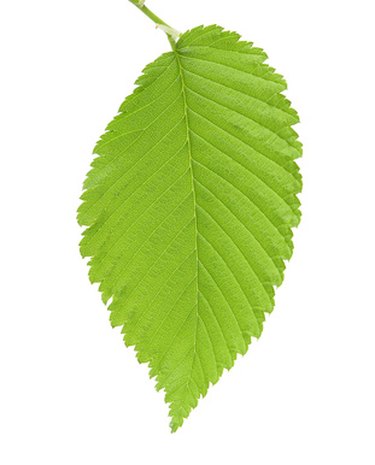
When your Chinese elm displays yellow leaves, you need to act quickly because this is a sign of two potentially severe disease problems. Also referred to as the lacebark elm, though this tree is typically considered resistant to severe yellowing diseases, keep in mind that resistant does not mean immune. Examine your Chinese elm regularly to catch problems early and to prevent the infection of nearby trees.
General Care
Video of the Day
Providing regular care to your Chinese elm is a significant aspect of keeping healthy trees. Healthy, maintained elms have a greater likelihood of avoiding pests and infection as well as recovering from these problems. Grow Chinese elm trees in areas of the landscape that offer full sunlight for best growth. Chinese elms prefer moist, well-drained soil with good fertility. These sturdy trees are prized for their tolerance to a variety of conditions, including acid or alkaline soil, wind and either wet or dry sites. Grow Chinese elms in USDA hardiness zones 5 to 9 for best development.
Video of the Day
Problems
Chinese elms with leaves turning yellow are likely infected with one of two devastating diseases. Dutch elm disease results in yellowing foliage caused by a fungal infection. This disease is spread to trees by native elm bark beetles, Hylurgopinus rufipes. These beetles carry fungal spores with them that, as they feed, they release into open wounds which in turn, infect your elm. Look for this problem during spring.
Another appropriately named disease is elm yellows. Typically occurring during summer, elm yellows is a phytoplasm disease that is carried by elm leafhoppers, Scaphoideus luteolus, picking up the disease from an infected tree and transmitted it onto a healthy plant. Leafhoppers pierce plant tissue with their sharp mouths to suck sap. Phytoplasms are organisms that act like bacteria.
Damage
Dutch elm disease fungi grow within an elm's circulatory system where water is transported. As the fungi grow, they block this system, inhibiting water and nutrients from reaching plant parts. The tree begins to lose color in its leaves and plant parts like branches wilt and die. Since the beetles are drawn to weak trees, they continue feeding and can lead to the demise of the tree.
With an elm yellows disease infection, your tree may display scattered yellowing and wilted leaves and dying branches. However, the entire Chinese elm may rapidly diminish in health and die. Unfortunately, yellowed leaves typically appear after inner plant tissue is already infected and discolored.
Management
For both of these diseases, the best control is to remove and destroy the entire tree as the diseases are not curable and transmission to nearby plants is likely.
For Dutch elm disease, though control of beetles is essential, management is very difficult as disease becomes widespread within communities, according to the University of Illinois website. For elm yellows, control is also challenging. Since disease can overwinter on fallen plant parts, gardeners should collect and destroy debris in addition to the destruction of the tree to avoid disease spread.
If you suspect either of these problems on your Chinese elm, contact your county extension agent so the community can become aware of the problem.